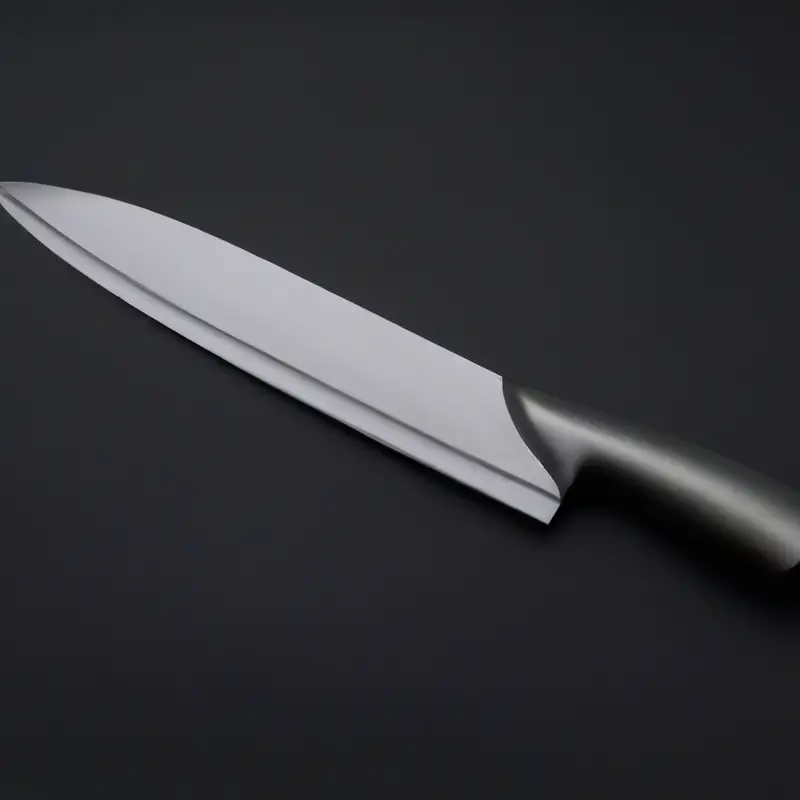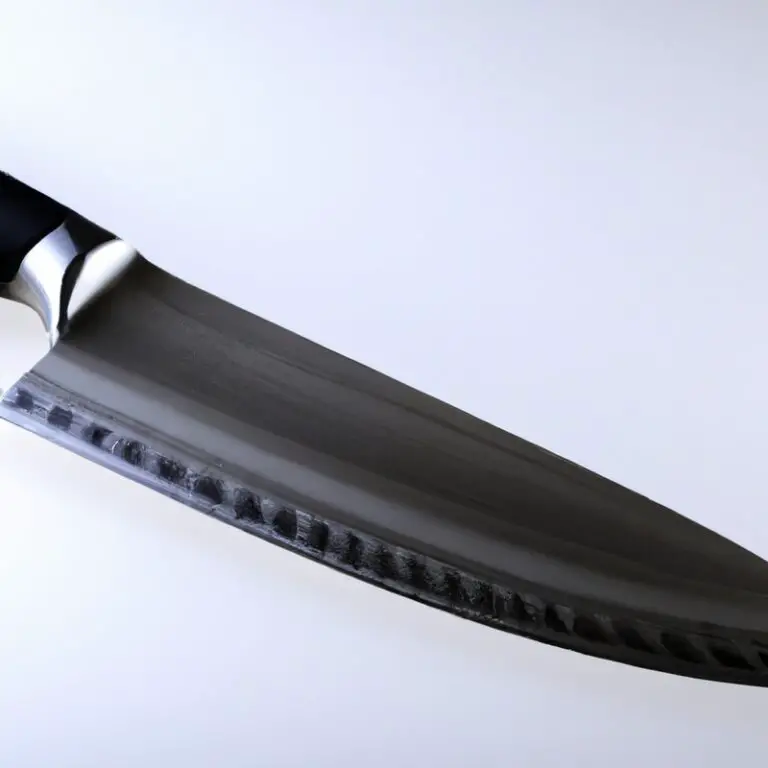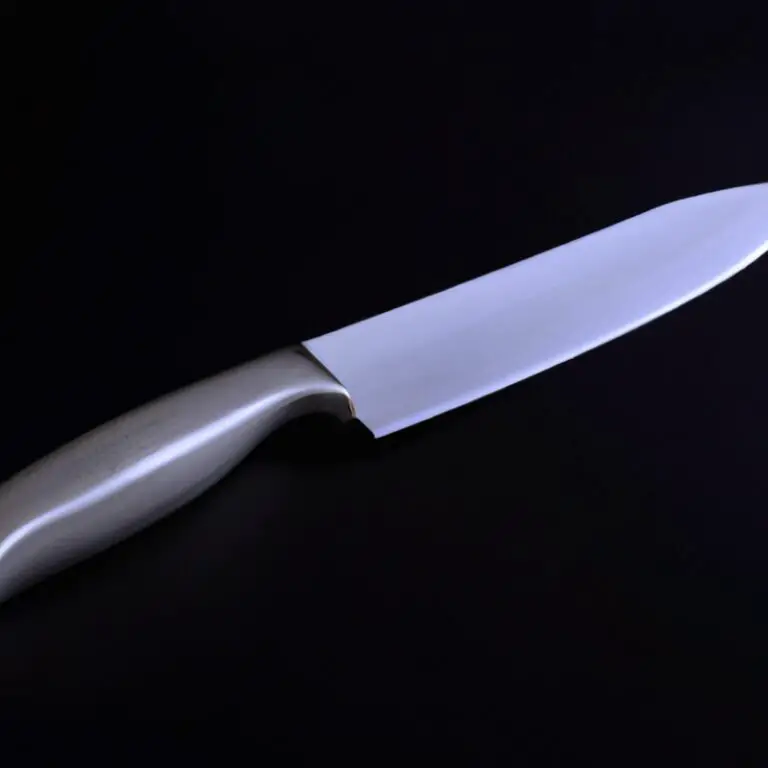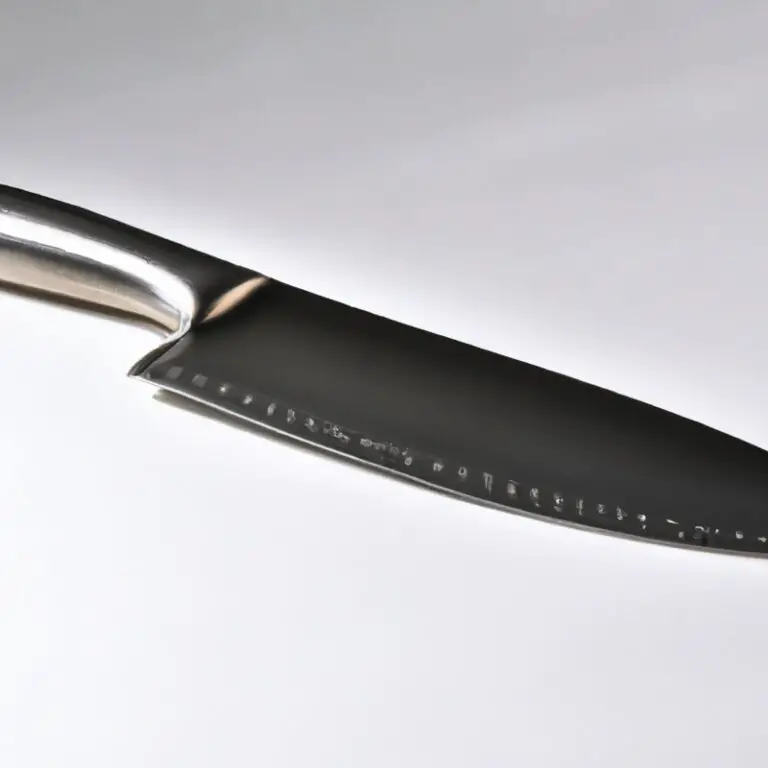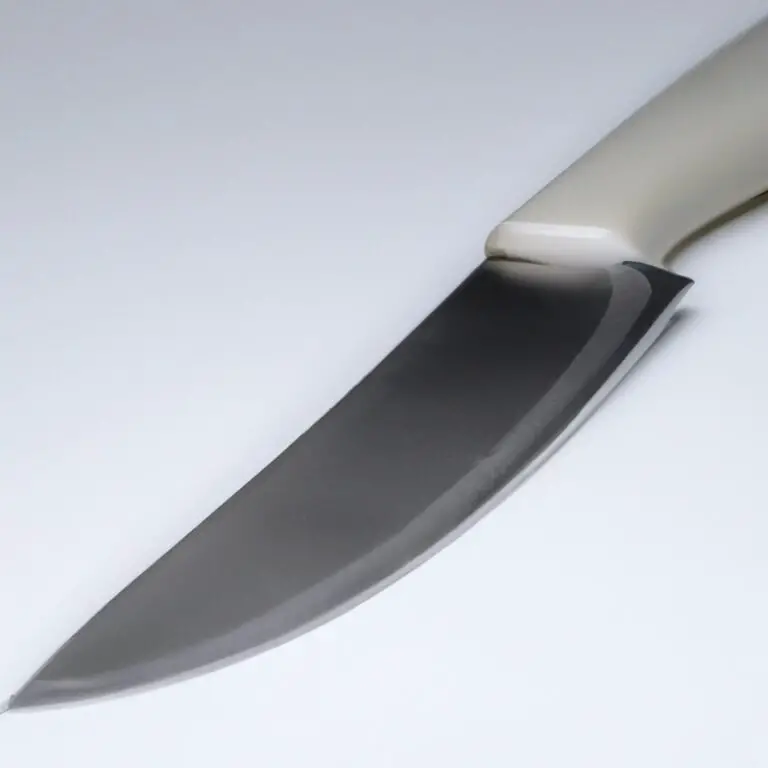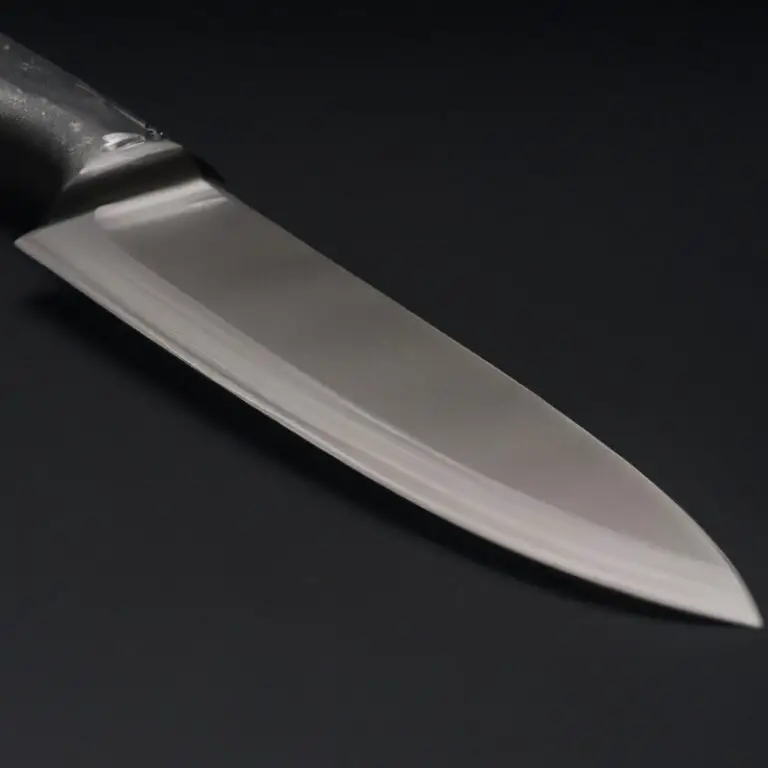How To Slice Tomatoes With a Santoku Knife Without Squishing Them? Easily!
Key Takeaways:
- A Santoku knife is the ideal tool for slicing tomatoes without squishing them due to its sharp and thin blade.
- Use a gentle sawing motion to slice the tomato with a Santoku knife, making sure to apply consistent pressure to avoid crushing the fruit.
- Hold the tomato securely with your non-dominant hand while cutting it with the Santoku knife using your dominant hand.
- Take your time and be patient when slicing tomatoes with a Santoku knife, as rushing the process can result in damage to the fruit and potential injury to yourself.
If you’re a tomato lover who’s tired of squishing your favorite fruit while trying to get that perfectly sliced tomato, fear not! With the right technique and tool, you can slice tomatoes without any squishing whatsoever. And that tool is none other than a Santoku knife.
As a culinary expert with years of experience, I’ve come to appreciate the unique benefits of using a Santoku knife for tomato slicing.
In this article, I’ll walk you through all the steps you need to know to create beautiful, evenly sliced tomatoes without any squishing. So buckle up and let’s get slicing!
| Steps | |
|---|---|
| Step 1 | Wash the tomato and dry it with a clean towel. |
| Step 2 | Hold the tomato with your non-dominant hand. |
| Step 3 | Place the Santoku knife at the top of the tomato. |
| Step 4 | Angle the knife at approximately 45 degrees. |
| Step 5 | Slice through the tomato with the knife, but do not press down too hard. |
| Step 6 | Continue slicing the tomato until it is completely cut. |
Understanding the anatomy of a tomato and its effect on slicing
To achieve perfect tomato slices, it is important to understand the anatomy of a tomato and its effect on slicing. The tomato fruit has two major parts: the skin and the flesh.
The skin is responsible for holding the tomato together, while the flesh contains the juice and seeds.
When slicing, the pressure applied to the tomato must be evenly distributed to avoid crushing the flesh and releasing a flood of juice. To avoid squishing your tomatoes, it is advisable to choose ripe tomatoes, as they are firmer and hold their shape better when sliced.
Additionally, using a sharp knife like a Santoku is key to slicing tomatoes.
A blunt knife may push the flesh of the tomato, causing it to burst. It is also important to slice the tomato perpendicular to its stem.
This will allow the pressure to be evenly distributed across the tomato and prevent it from rolling around while being sliced.
Taking time to understand the anatomy of a tomato will result in cleaner and evenly sliced tomatoes.
The importance of choosing the right knife for tomato slicing
Choosing the right knife for tomato slicing is crucial to achieve clean and even slices without crushing the fruit. A sharp, serrated knife like a Santoku knife is ideal for tomato slicing because it can effortlessly slice through the skin without applying pressure.
A dull knife will require more pressure from you to cut, which can lead to tomato squishing.
A Serrated blade is also great for separating the skin from the flesh of the tomato quickly. A chef’s knife is not an ideal choice because the flat edge can crush tomatoes and sometimes make them roll around.
Using a specialized tomato knife is another option to consider.
Whatever knife you choose, make sure it is sharp and comfortable to handle to ensure successful tomato slicing.
The unique features and benefits of using a Santoku knife for tomato slicing
The Santoku knife is a Japanese multi-purpose knife that is known for its unique features and benefits particularly when it comes to tomato slicing. Its blade has a granton edge, which reduces friction and prevents the tomato from sticking to it.
This feature also allows for a smooth and effortless slicing motion.
The width of the blade provides stability and precision when slicing, therefore it is able to create clean and even tomato slices with minimal pressure and without squishing the tomato. Unlike other knives, the Santoku knife has a curved tip that allows for a rocking motion which is ideal for slicing through the tomato’s delicate skin.
Additionally, it has a shorter blade that provides more control over the knife when slicing.
In summary, the unique features of the Santoku knife make it an excellent choice for tomato slicing. Its granton edge, wide blade, curved tip, and shorter blade provide stability, control, and precision ensuring clean, even slices without squishing the tomato.

Proper grip and hand placement techniques for efficient and safe tomato slicing
To properly slice a tomato with a Santoku knife, you need to hold the knife with your dominant hand, and hold the tomato firmly with your non-dominant hand. This helps you maintain control of both the knife and the tomato, making it easier to slice precisely.
When holding the knife, wrap your fingers around the handle, with your index finger resting on the spine of the blade for added stability.
Your thumb should be on the other side of the handle, helping to guide the blade. Place the tip of the knife on the tomato and start slicing using a back-and-forth motion.
Make sure to apply gentle pressure and use the entire length of the blade to slice through the tomato, following the natural curve of the fruit.
Be careful not to put too much pressure on the tomato, as this can cause it to squish. When slicing larger tomatoes, consider cutting them in half first to create a flat surface, making it easier to slice through evenly.
And always remember to use a sharp knife for efficient and safe tomato slicing.
Techniques for creating clean and even tomato slices using a Santoku knife
To create clean and even slices when using a Santoku knife to cut tomatoes without squishing them, try these techniques:
- Begin by choosing a ripe tomato and washing it thoroughly.
- Hold the tomato steady on a cutting board and make a small cut at the top with the heel of your Santoku knife.
- Then, use a gentle sawing motion to slice through the tomato while maintaining constant pressure on the blade.
- For best results, angle the knife at 45 degrees and slide it through the tomato in one smooth motion.
- Once you’ve cut to the bottom, gently release the tomato from your grip and repeat the process for the remaining tomatoes.
Remember to maintain a firm grip on the knife and take your time making each slice. By following these simple techniques, you’ll be able to create clean and even tomato slices every time.
Best practices for cleaning and maintaining your Santoku knife for optimal tomato slicing
Keeping your Santoku knife clean and well-maintained is crucial for optimal tomato slicing. Here are some best practices for cleaning and maintaining your Santoku knife:
- Hand wash your knife with warm, soapy water immediately after each use. Avoid soaking it in water for too long.
- Dry the knife thoroughly with a soft cloth or paper towel to prevent rusting.
- Store the knife in a knife block or sheath to protect the blade and prevent it from getting dull or damaged.
- Regularly sharpen your knife with a whetstone or sharpening tool to maintain its sharpness. A dull knife can cause tomatoes to squish when sliced.
- Use a honing rod to keep the blade straight and aligned, ensuring a more precise and clean cut.
By following these best practices, you can ensure your Santoku knife stays sharp and efficient for optimal tomato slicing.
The role of blade sharpness in preventing tomato squishing during slicing
The role of blade sharpness cannot be overemphasized when it comes to preventing tomato squishing during slicing. A dull blade will not only slide off the tomato but rather squish it, making it unattractive and less appealing to eat.
A sharp blade ensures that the tomato’s skin is sliced cleanly, leaving the flesh intact, resulting in beautifully sliced tomatoes without squishing.
To avoid squishing, it is recommended to sharpen your Santoku knife regularly using a honing rod or sharpening stone. Maintaining the sharpness of your knife is crucial to achieving perfectly sliced tomatoes, and it is one of the best practices for efficient and safe tomato slicing.
The benefits of using a honing rod to maintain the sharpness of your Santoku knife
Using a honing rod to maintain the sharpness of your Santoku knife has various benefits. It helps ensure that the blade is kept straight, so that the knife glides smoothly through the tomato without squishing it.
By honing your knife regularly, you can also prevent it from becoming dull, which can make the knife work harder to slice through tomatoes.
Additionally, regular honing helps to extend the lifespan of your Santoku knife by reducing the need for frequent sharpening. Lastly, a honing rod allows you to maintain the knife’s factory edge, ensuring that the blade is precise and delivering optimal performance, making it easier to slice tomatoes flawlessly.
How to use a tomato slicing guide to achieve consistent and perfect tomato slices
A tomato slicing guide is a handy tool that can help you achieve consistent and perfect tomato slices. Here’s how to use it in a few simple steps:
- Choose a tomato slicing guide that fits your Santoku knife
- Place the tomato in the guide, with the stem end facing outwards
- Hold the tomato and guide steady with one hand, while slicing downwards with your Santoku knife
- Repeat until all slices are complete
Using a tomato slicing guide helps in obtaining even and consistent tomato slices with minimal effort. It eliminates the risk of uneven slicing, squishing or injuring your fingers, making tomato slicing a safe and enjoyable task.
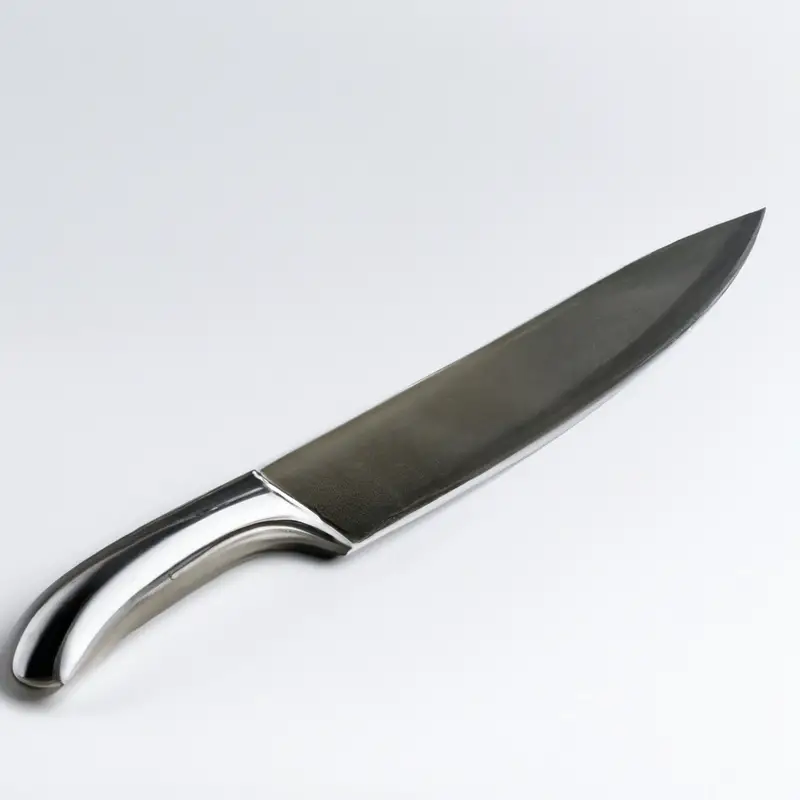
Experimenting with different tomato slicing techniques to find the one that works best for you
Experimenting with different tomato slicing techniques is an excellent way to find the one that works best for you. Some people prefer to slice their tomatoes horizontally, while others prefer vertical slices.
A few techniques that you can experiment with include the classic rocking method, the saw method, and the push-pull method.
Each method has its advantages and requires different levels of skill. For instance, the rocking method is suitable for those who have excellent knife skills and are looking to slice the tomato quickly.
At the same time, the saw method is better suited for beginners who want to make clean cuts easily.
Additionally, it’s important to note that the thickness of the slices can also have an impact on the taste and texture of the tomato. Therefore, when experimenting with different techniques, you should also consider the thickness of the slices.
Overall, try different techniques to find the one that’s comfortable, efficient, and yields the best results for your needs.
Final Verdict
Slicing tomatoes with a Santoku knife is a skill that involves proper technique and the right equipment. With the correct grip and hand placement, along with the unique design of a Santoku knife, you can achieve clean and even tomato slices without squishing them.
Remember to keep your knife sharp, use a honing rod for maintenance, and experiment with different slicing techniques to find the one that works best for you.
By following these tips and practices, you can enjoy beautifully sliced tomatoes that will take your culinary creations to the next level. Trust in the reliability of this information and become a master tomato-slicer with confidence and ease.

